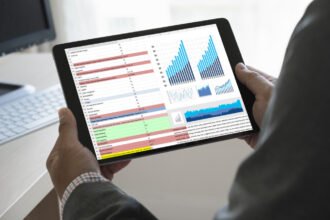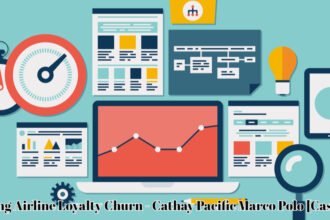In this era of crypto and fintech buzz, maintaining financial stability takes more than just putting money in a savings account.
Traditional saving methods may have worked for our parent’s generation, but building wealth today requires a new approach optimized for digital disruption. This is where advanced data analytics comes in – the secret weapon transforming personal finance.
Leveraging powerful analytics gives you insights into your spending habits, income streams, and financial obligations you never knew existed. With visibility into these hidden patterns, you can make saving strategic rather than reactive.
In this article, we’ll uncover how leveraging data analytics can result in optimized saving tactics, upgrading how you take control of your finances. With data-driven insights, it’s now easier than ever to make smart saving decisions, monitor progress, and achieve financial goals over time.
Understanding the Power of Big Data in Personal Finance
We live in the information age, and big data is powering growth across every industry. Personal finance has been supercharged by the explosive rise of data, giving investors more fuel than ever before.
Today’s financial giants are collecting troves of transaction details, behavior metrics, market signals, and economic indicators that add up to a treasure trove of actionable intelligence.
By analyzing the numbers, they can gain clarity on exactly how consumers spend, where the smart bets are, and, most importantly – the formulas for maximizing savings.
Did you know the global big data market is projected to exceed $100 billion by 2027? That sure shows how analyzing numbers is becoming more important in every part of business.
When it comes to personal finance, this sea of data can help us understand our spending habits, find smart investment options, and, most importantly, create savings strategies that work.
How to Leverage Big Data to Craft Smart Saving Strategies
Here are four ways savvy consumers can leverage big data and artificial intelligence (AI) to make smart money-saving decisions.
1. Use Predictive Modeling to Discover Optimal Saving Account Choices
Choosing the right savings account can seem daunting, given the universe of options available today. However, with the power of predictive analytics, this choice becomes straightforward.
By analyzing past data patterns and current market conditions, predictive models can estimate future interest rates, illuminating the ideal savings vehicle for achieving your financial goals.
McKinsey research found that financial institutions applying predictive modeling saw a 10% revenue boost and a 20% decline in account closures. This empirical evidence makes clear the pragmatic value of leveraging predictive capabilities for personal portfolio administration.
With advanced analytics assisting in the evaluation, selecting a savings account tailored to your fiscal aims becomes a simpler task.
2. Leverage Machine Learning Algorithms for Expense Tracking
Effective cash flow management is a cornerstone of long-term success in the markets. While manually tracking expenses can provide insights, technology provides a more strategic approach.
Machine learning algorithms leverage advanced analytics to automatically categorize transactions, identify patterns, and deliver actionable recommendations – all with minimal effort. This frees your time to focus your energy on opportunities, not administrative tasks.
Recent findings published in the Journal of Financial Planning demonstrate just how impactful these sophisticated tools can be. On average, consumers leveraging ML for expense tracking saw savings increase by 15% compared to conventional methods.
3. Use Data Analytics to Identify Cost-Saving Opportunities
Artificial intelligence is revolutionizing how we get financial guidance!
AI systems can study huge amounts of details like earnings, costs, savings targets, and risk appetite to offer customized suggestions tailored just for you.
By evaluating metrics such as income, spending, savings objectives, and risk appetite, AI platforms can better understand your unique financial situation.
Better still, they can help you identify the best places to save money based on interest rates and monthly charges, among other factors. For instance, Western Alliance Bank’s savings rate is 5.36%, which is substantially higher than what you’ll find in other banks, and has no monthly maintenance fee. Data analytics can help you gain such insights, draw meaningful conclusions, and make decisions that will maximize your savings while cutting costs.
This emerging trend is no passing fad but rather reflects consumers’ increasing demands. A recent Accenture study found that 78% of respondents welcomed AI-based guidance, valuing the convenience and tailored recommendations these innovative solutions offer.
4. Real Time Monitoring & Adaptive Strategies
Advanced data analytics unlocks tremendous value for savers and investors in today’s dynamic markets. Through real-time monitoring of income, expenses, portfolio performance, and macroeconomic conditions, sophisticated algorithms now allow individuals to continuously optimize savings strategies for maximum growth.
By maintaining constant vigilance and agility, you can stay on the most profitable path even as opportunities emerge and threats materialize.
Wrapping Up
Advanced data analytics provides a wealth of opportunities for developing savvier savings strategies. Predictive modeling, machine learning algorithms, and artificial intelligence can collectively illuminate paths toward improved financial decision-making.
By capitalizing on these data-driven tools and techniques, we can gain power over our finances, maximize savings potential, and progress towards a brighter economic horizon.










